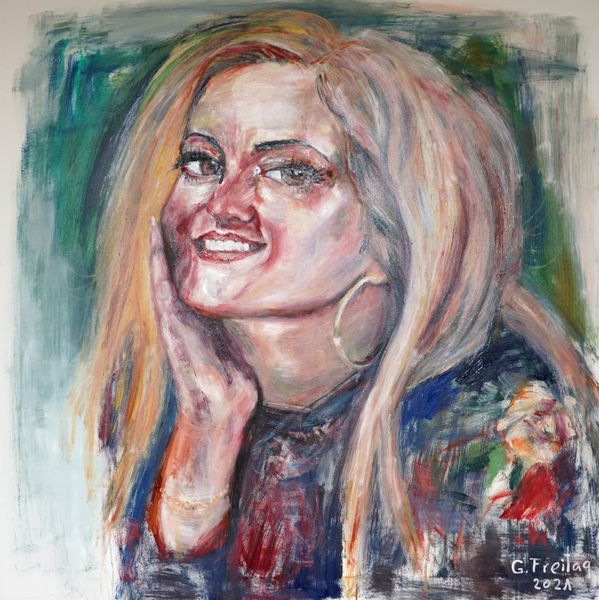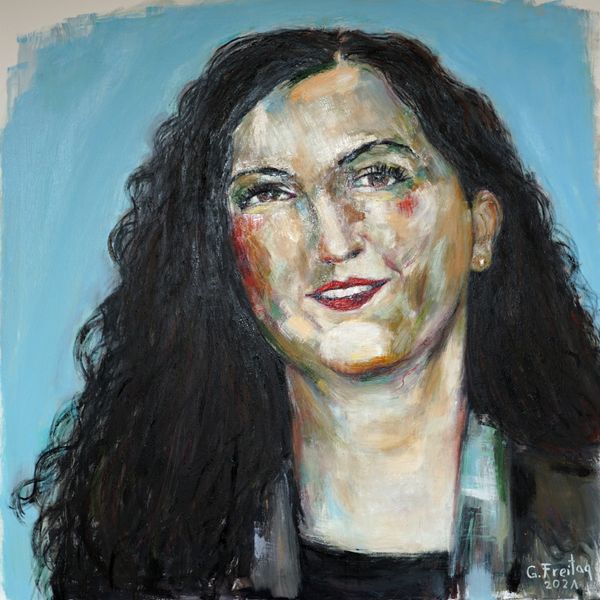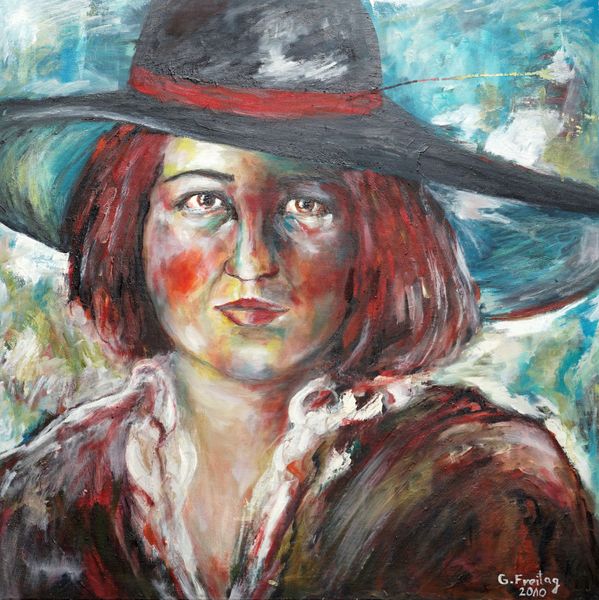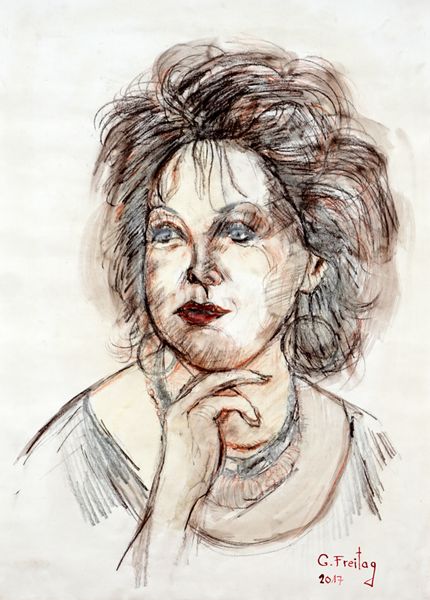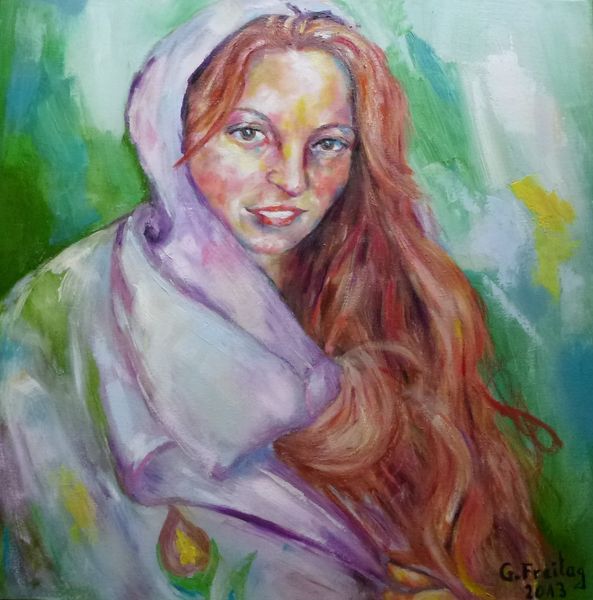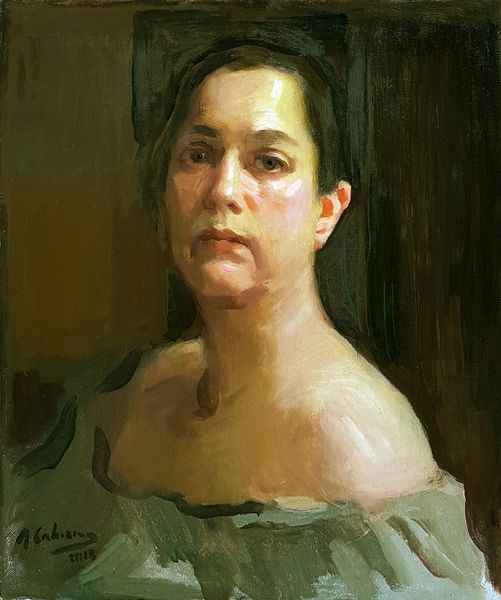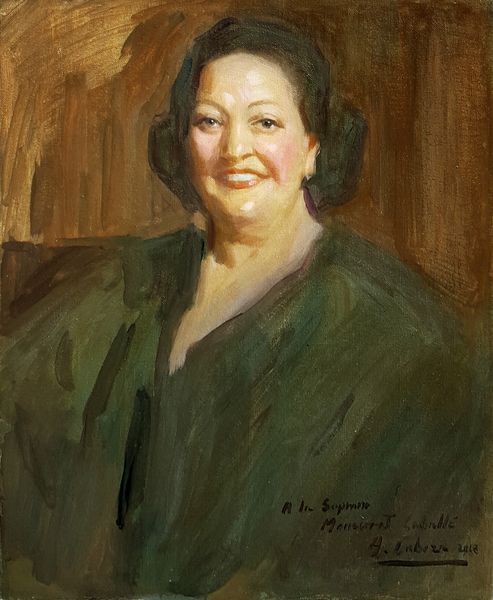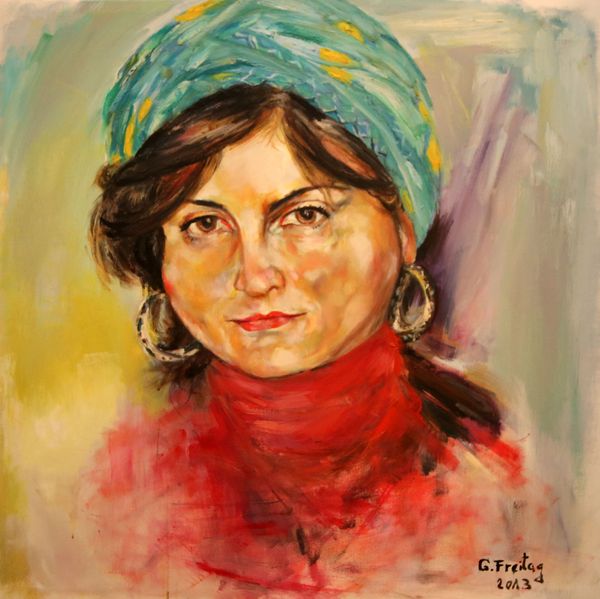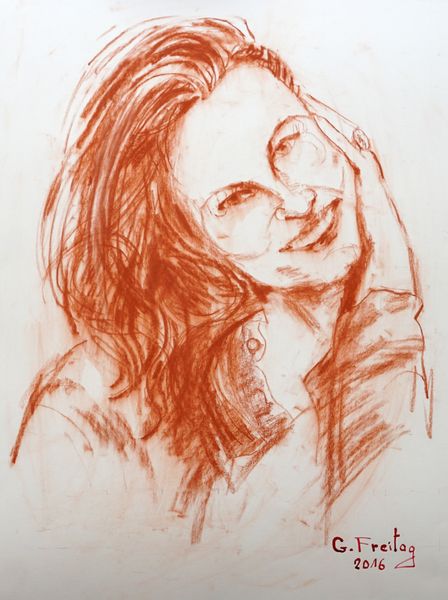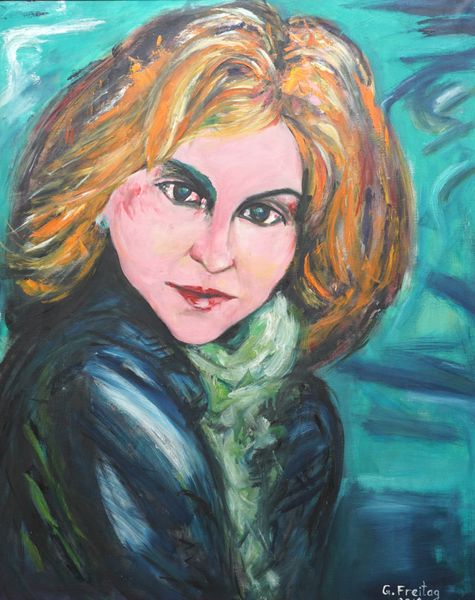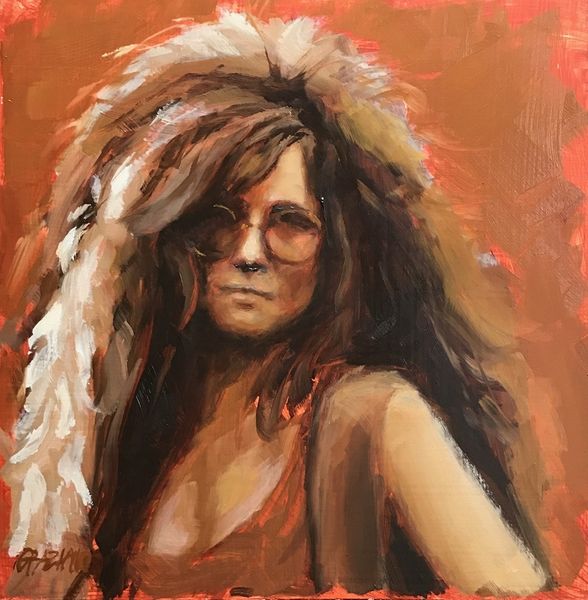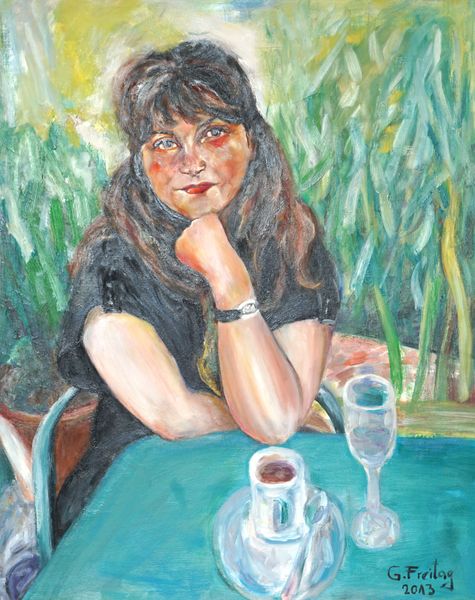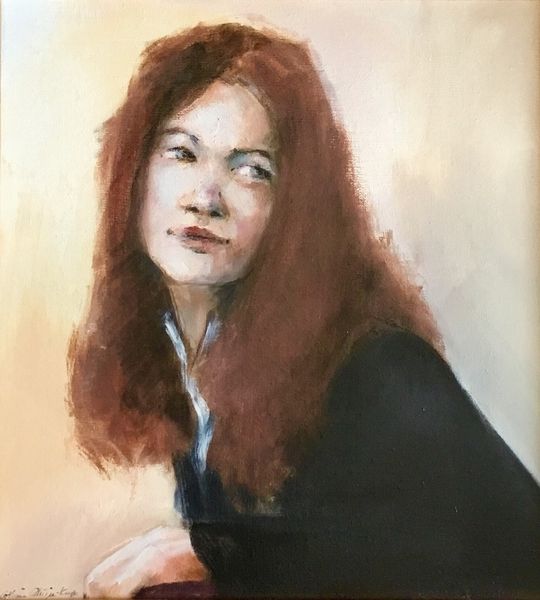
painting, oil-paint
#
portrait
#
contemporary
#
painting
#
oil-paint
#
figuration
#
oil painting
Dimensions: 80 x 90 cm
Copyright: Copyright: Gazmend Freitag
Curator: This is "Nadège Picq," an oil painting created in 2013 by Gazmend Freitag. The work immediately conveys a sense of intimate familiarity. What’s your first impression? Editor: I'm struck by the portrait's overall warmth. There’s a feeling of kindness and openness emanating from the subject's expression and the soft brushstrokes. Curator: I agree. The eyes seem to hold centuries of wisdom, or at least a knowing glance that implies an inner depth. What could the artist be suggesting? Editor: Freitag has chosen to represent her in a way that feels approachable. The slightly turned head and the gentle smile imply that this might be a representation of strength, kindness and resilience, typical features that are usually sought in community leadership, perhaps pointing to an understated yet essential aspect of societal strength. Curator: That makes sense when considered through the prism of female leadership and its changing representation in modern painting. But look closer at details, such as her jewelry or her half-smile. What symbols may these embody? Editor: Her hoop earrings might be visual representations of community ties. While their circular shape speaks to the idea of continuity and wholeness, or cycles of growth and connection. As if they embody the continuous support systems and bonds. I wonder whether they represent, for example, social movements the sitter was linked to. Curator: Those could signify the circles within which one lives. Furthermore, if this individual was committed to working for a cause or had progressive ideas about making a positive impact, this painting could represent one’s ability to see beyond limitations. I see this gaze embodying what Jung called "active imagination". Editor: I would not completely rule out the idea of individual agency in all this. While your explanation sounds compelling, are we not reinforcing patterns that reduce this portrayal to a symbolic dimension? I’m more intrigued to know who she was and what role her community occupied within the society. Curator: Of course. We ought to keep searching for such data that gives an identity back to the portrayed person. Otherwise, we could interpret all of it based only on culturally inherited views on power, femininity or race. Editor: It certainly serves as a prompt to delve deeper into understanding female representations, to examine who they are, and their socio-political backgrounds, instead of simply attributing symbolic meaning based on visual features. Curator: Precisely. A powerful invitation to examine both ourselves and the broader cultural narratives that shape how we interpret the world around us.
Comments
No comments
Be the first to comment and join the conversation on the ultimate creative platform.

